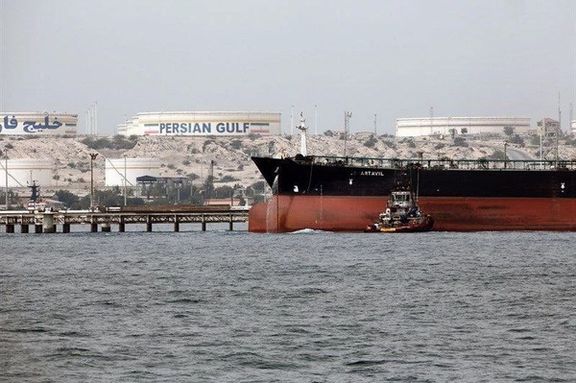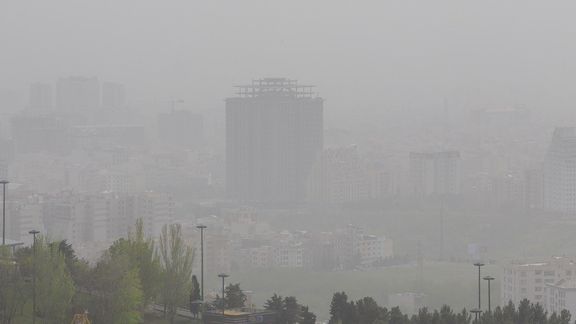Hezbollah Faces Financial Problems As Aid From Iran Decreases

Lebanese media report that Hezbollah is facing financial problems due to the situation in Iran, as it cannot import Iranian goods to sell at a discount to its supporters.

Lebanese media report that Hezbollah is facing financial problems due to the situation in Iran, as it cannot import Iranian goods to sell at a discount to its supporters.
Two years ago, Lebanon's Hezbollah distributed a card called "Sajjad" among the families of its members to buy food stuff with a 60% discount at shops selling Iranian products.
The Lebanese website "Janoubieh" quoted its sources as saying that now shopping with this card has encountered problems.
According to this report, the Islamic Republic is unable to send food items such as cooking oil and tea to Lebanon due anti-regime protests and its economic problems, including the sharp increase of the US dollar against its currency, the rial.
The militant Hezbollah group has reportedly replaced Iranian goods with the Lebanese, Turkish, and Indian items for the users of the Sajjad card.
Makram Rabah, a Lebanese political activist, emphasized in an interview with Iran International that the consequences of the uprising of Iranians against the regime could now be seen in Lebanon.
He said the dire situation of the Islamic Republic, as the biggest financial and political supporter of Hezbollah, causes this group to lose the ability to stand on its own feet.
Earlier, some media, including Jerusalem Post, reported that the Palestinian groups affiliated to the Islamic Republic have also suffered a financial crisis because of troubles Iran faces.

Iran’s battered currency regained 10 percent of its value Saturday after a new central bank chief assumed office following a drop to historic lows in December.
The US dollar dropped to below 400,000 rials from a high of 440,00 earlier this week, a 10-percent gain for the Iranian currency that has fallen more than 10-fold since 2018.
The new central bank chief Mohammad-Reza Farzin announced the bank’s intervention in the market as he began his first official day at work.
“The exchange rate in the open market is exaggerated,” he claimed, although an apparent massive infusion of dollars was needed to reverse rial’s precipitous decline. He added that economic fundamentals do not justify the currency’s fall, insisting that Iran sold $36 billion of oil in the past nine months.
Farzin did not explain why the rial has fallen to unprecedented lows if the country is flushed with hard currency, but he vowed “appropriate intervention” in the market to support the rial.
Even with Saturday’s rise, the currency is still 30 percent lower than in August and almost 50 percent less than in mid-2021, when the current hardliner president Ebrahim Raisi was elected and appointed other hardliners to top positions.
Rial’s current wave of decline began in early 2018 when the United States decided to withdraw from the Obama-era nuclear accord with Iran, known as the JCPOA and impose ‘maximum pressure’ sanctions. The country’s oil exports, its economic lifeline, and international banking came under US third-party sanctions, meaning that any company or country violating the restrictions could itself come under US sanctions.
The rila which was then around 34,000 to the dollar began to fall, with the government forced to offer cheap foreign currency to importers of essential goods, to protect people from an inflationary shock.
The government’s fixed-rate 42,000 rials for one dollar soon became a source of abuse by people who claimed to be importing essential goods, like food or raw materials, and instead imported luxury cars or simply turned around and sold the cheap dollars on the free market making huge profits.
The government began restricting the availability of dollars at 42,000 rials and earlier this year completely ceased the practice, saving around $15 billion annually, but accelerating food price inflation. In effect an important subsidy was removed, raising food, animal feed and medicine prices.
Following this inflationary shock, in early September talks with the US and its European allies to revive the nuclear deal fell apart, signaling a possible worsening of the economy. This triggered a new wave of rial’s de facto devaluation, as it fell in Tehran’s open market. Local reports also have mentioned accelerated capital flight from the country, which might have played a role in the sudden worsening of the exchange rate.
At the same time, nationwide antigovernment protests began in mid-September after Mahsa Amini, a young woman was killed in police custody. The popular uprising created a deeper feeling of instability and uncertainty.
Ali Shariati, a member of Tehran’s chamber of commerce predicted that the rial will be stabilized at 380,00-390,000 to the dollar by the government.
This might be the government’s goal, but to maintain the rial at that range, the central bank will have to continue injecting dollars into the market, a significant part of which simply leaves the country, to the tune of at least $10 billion annually.

Following warnings issued by the western countries about traveling to Iran, the Islamic Republic is to allocate some budget to “counter Iranophobia” in near future.
Iran’s Deputy Tourism Minister Ali-Asghar Shalbafian said Saturday that suggestions have been made for a line of credit for next Iranian year beginning on March 21.
However, he mentioned until the end of current Iranian year on March 20, 2023, the tourism ministry must go ahead with a “limited budget”.
Amid more arrests of dual nationals with Western passports by the Islamic Republic in recent months, several countries have issued warnings to their citizens against traveling to Iran.
The United Kingdom, United States, France, Sweden, Netherland, and Canada advised their nationals not to travel to the Middle Eastern country due to “insecurity” since the nationwide anti-government protests began in Iran in mid-September.
Fearing arrest by Iranian authorities, most foreign tours booked for the New Year and January in popular historic cities have been canceled.
In early November the chairman of the board of Iran's Tour Guides Association, Mohsen Haji-Saeed said some tourists seen in the wrong places and at the wrong time were considered as “spies” and that some foreign nationals had been detained only for taking photographs of the protests “out of curiosity”.
On September 30, Iran’s Intelligence Ministry announced the detention of nine foreign citizens from Germany, Poland, Italy, France, the Netherlands and Sweden. The ministry alleged those arrested had been "on the stage or behind the scenes" of the recent protests.

Iran’s income from crude oil exports will substantially decline in 2023, according to a report in the official government news website, IRNA.
The Islamic Republic says that its oil export revenues were around $37 billion in 2022, higher than in 2021 and substantially more than in 2020, when it sold much less oil to China.
IRNA says that because of weaker global demand in 2023, Iran’s exports are estimated to reach $27.3 billion, around $10 billion less than in 2022.
Russia hit by sanctions has significantly increased cheap oil exports to China, becoming a competitor to Iran, although they are military and political allies.
Iran plans its budget according to expected oil revenue since it covers around half of all government financial needs. This year, the government has not published its budget outline yet for the next Iranian year that starts on March 21, 2023.
Already, Iran’s currency has experienced a shocking decline since September, falling from around 310,000 rials to the US dollar to more than 400,000, because of a huge rise in the money supply as the government prints more banknotes to pay its expenses.
Tehran keeps oil export and income figures a state secret and estimates are often offered by OPEC or other international organizations. It is believed that Iran offers hefty discounts to its main customer China, which allows its small refineries to import Iranian crude despite United States sanctions.
A drop in oil in 2023 will have a significant negative impact on the economy, leading to more money being printed by the government and higher inflation.

German media say investigations are underway about the role of nearly a dozen Iran IRGC-linked people who are accused of launching attacks on Jewish centers.
Die Welt daily wrote Thursday that Iran’s Revolutionary Gurad manages such operations outside of Iran by hiring criminals.
Police has now launched an investigation to find out more about a terrorist cell in North Rhine-Westphalia, said Welt, adding that one of the suspects had been in radical circles for some time.
Germany and the European Union are discussing the listing of the IRGC as a terrorist organization for its role in violence on protesters in Iran.
In November, an unknown person fired several times at the door of a synagogue in downtown Essen west of Germany.
Nobody got hurt, but the investigators assume the act was part of a series of anti-Semitic attacks probably launched by a cell of terrorists managed by the IRGC, the report said.
Last month, a German TV channel reported the country's security institutions believe the Revolutionary Guard is behind the attacks on Jewish centers in the country.
On November 18, a German-Iranian was detained on suspicion of committing arson at a synagogue in the city of Bochum in Germany.
Local police suspected that the man is connected to Ramin Yektaparast, the founder of the Hell’s Angels group in the city of Mönchengladbach.
German Media reported Yektaparast fled to Iran last year to escape trial for the brutal murder of another member of the gang in 2014.
The suspect might also have been responsible for the attack on the old synagogue in the city of Essen, said German officials.

Air pollution in Iran’s capital Tehran and several other cities has reached alarming levels, prompting the government to issue warnings a close some schools.
Iran Meteorological Organization (IMO) on Friday ranked many urban areas as orange or red from Friday December 30 to January 1, specially in Tehran and nearby cities.
According to local media, the government continues to burn mazut at power stations, a dirty oil product banned in most countries. The country usually faces natural gas shortages in winter months, because of higher home consumption. As a result, the decaying energy sector resorts to using mazut with an immediate impact on air pollution.
IMO warned citizens that air quality in many cities is deemed to be harmful or dangerous. These include Tehran, Karaj, Esfahan, Arak and Tabriz. Local officials have demanded that the government stops using mazut, but that could lead to blackouts.
Iran has the world’s second largest natural gas deposits but is unable to boost production because of lack of capital and Western technology. Government officials have said that the country needs to invest $40 billion in modernizing and expanding its gas extraction facilities, but most are in the Persian Gulf and need Western technology.
Due to its anti-West foreign policy and an expanding nuclear program, Iran is under US sanctions and cannot borrow money or technology from most of the world.